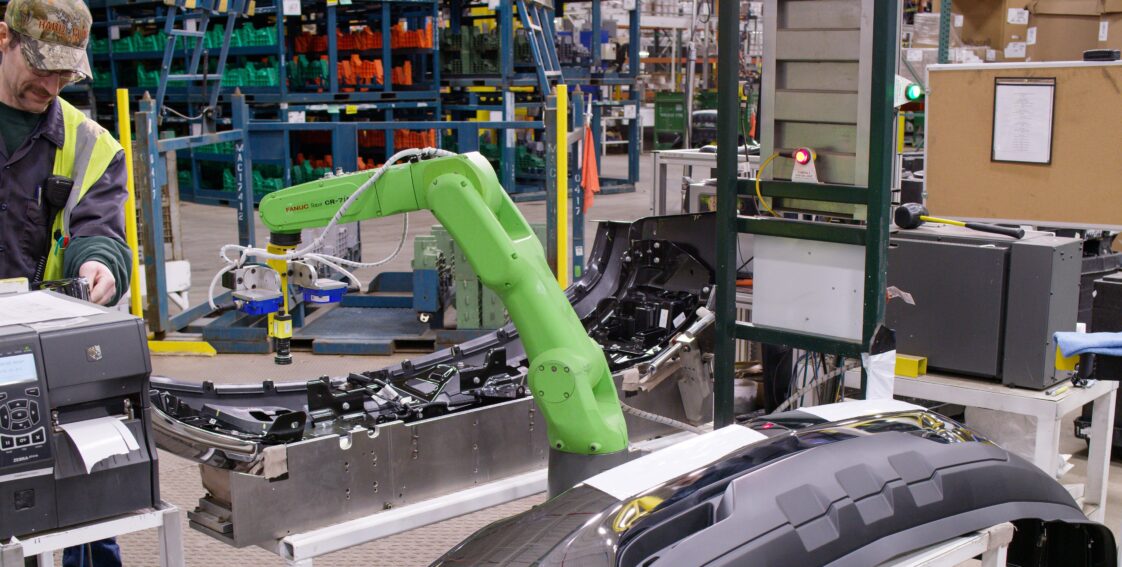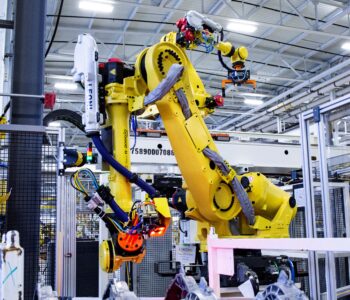
Using Automated Metrology in Manufacturing
In today’s global manufacturing markets, the need for accurate measurement has moved well beyond micrometers, gauges, and calipers. That’s why manufacturers are replacing manual metrology tools with fully automated systems.
What Is Automated Metrology?

Automated metrology, sometimes called 3D measurement systems, can measure surface profiles, roughness, dimensions, critical tolerances, and part geometries in real-time. This in turn helps improve the quality of products, ensure process repeatability, and reduce the incidences, impact, and costs of part defects during manufacturing.
Capabilities & Applications
Automated metrology has many applications within the manufacturing sectors. These applications include measuring part lengths, thicknesses, widths, angles, surface profiles, and part geometries.
Inline Metrology Versus Standard Automated Metrology
By installing automated metrology systems in-line with your manufacturing process, that system can analyze and measure products during every stage of the production process. This ability to read and react in real-time allows manufacturers to stop production immediately, assess the problem, determine the incidence of that problem, and adopt corrective actions to remove it as a continual concern.
Benefits
There are several immediate benefits to using automated manufacturing inspection equipment.
- Accuracy: Manual metrology processes involve measuring parts and subcomponents using micrometers, protractors, and calipers and verifying them against part outlines and top-level assembly drawings. It’s easy for human error to occur. However, automated metrology systems are designed to provide continuous feedback, immediately identify defects, and provide data instantaneously.
- Time: Using manual processes for measurement is laborious and time-consuming. While measurements are being taken, production is moving forward. With manual measurements, there is a guaranteed lag between when defects are identified, and production is stopped. Automated in-line metrology systems help manufacturers identify and resolve defects and other issues before parts reach the end of the line.
- Cost Savings: Replacing manual processes with in-line robotic laser scanners saves manufacturers considerable money. These savings are summarized by lower labor costs, faster measurements, quicker identification of part defects, and shorter periods to make real-time production adjustments.
- Data Retention: It isn’t just a question of how much time it takes to measure parts manually. It’s also about the time it takes to capture, retain, and use critical data to benefit your business. Manual metrology processes require considerable time to extrapolate, read and interpret data. Intelligent automated metrology systems make it easier to leverage data to your advantage.
Factors to Consider Before Implementing an Automated Metrology System
Although automated metrology systems help manufacturers reduce costs, improve quality, and increase repeatability, there are still some challenges and issues to be mindful of when implementing it.
Before implementing any automated system, you should focus on the following factors:
- Capital Expenditure: Purchasing a metrology system is a financial commitment and should be treated as such. Treat the purchase the same as you would any capital expenditure. Define the need, your objective(s), and your expected return on investment (ROI). These systems will provide a high ROI, but to appreciate that ROI, there must be an understanding of the upfront investment.
- Time & Resources: Even though these systems are automated, employees, technicians, operators, and management must be adequately trained on how these systems operate and how they should be maintained.
It’s also important to note that adopting the wrong system out of necessity, or as a means of quickly resolving production defects, is problematic at best. There is no way to cut corners. Doing so can cause more harm than good. Performing a comprehensive application evaluation will ultimately help you make the best decision.
MAS Makes It Simple For You
If you have questions about automated metrology and how to implement a system in your facility, let our team at MAS help you.
Founded in 2003, we specialize in manufacturing metrology systems and other measurement solutions for clients in multiple industries. We have created a family of pre-engineered metrology systems that we call the QC Plus™ which make it easier for manufacturers to get the benefits of automated measurement without the headaches. In addition, our powerful software not only helps in measuring part geometries and profiles, but also prompts robotic arms to redirect their path to correct errors. The Scan-to-Path™ software package can be integrated into any robotic 3D laser scanning systems and is only available from MAS. Instead of simply removing the part from the production line, the software collects data and then communicates directly with the robotic scanning system, allowing it to adjust downstream processes immediately. If you would like to learn more about our Scan-to-Path™ software, or just have general questions about automated metrology, please schedule a discovery meeting with one of our team members today.
